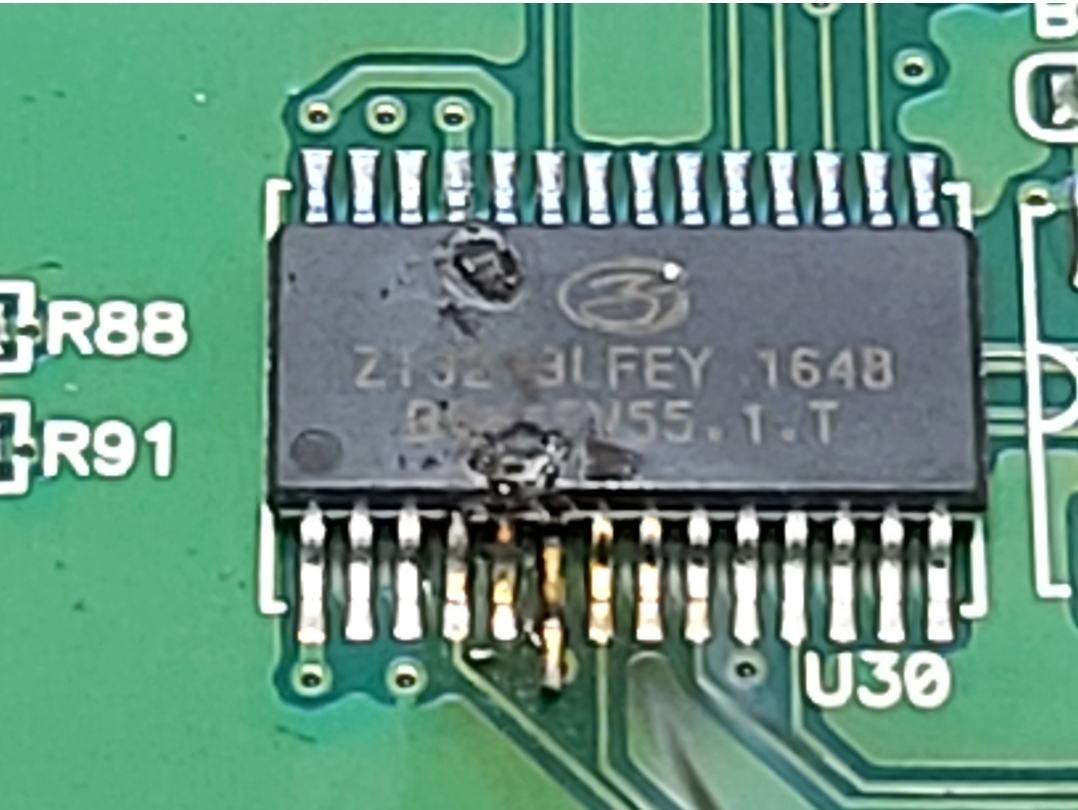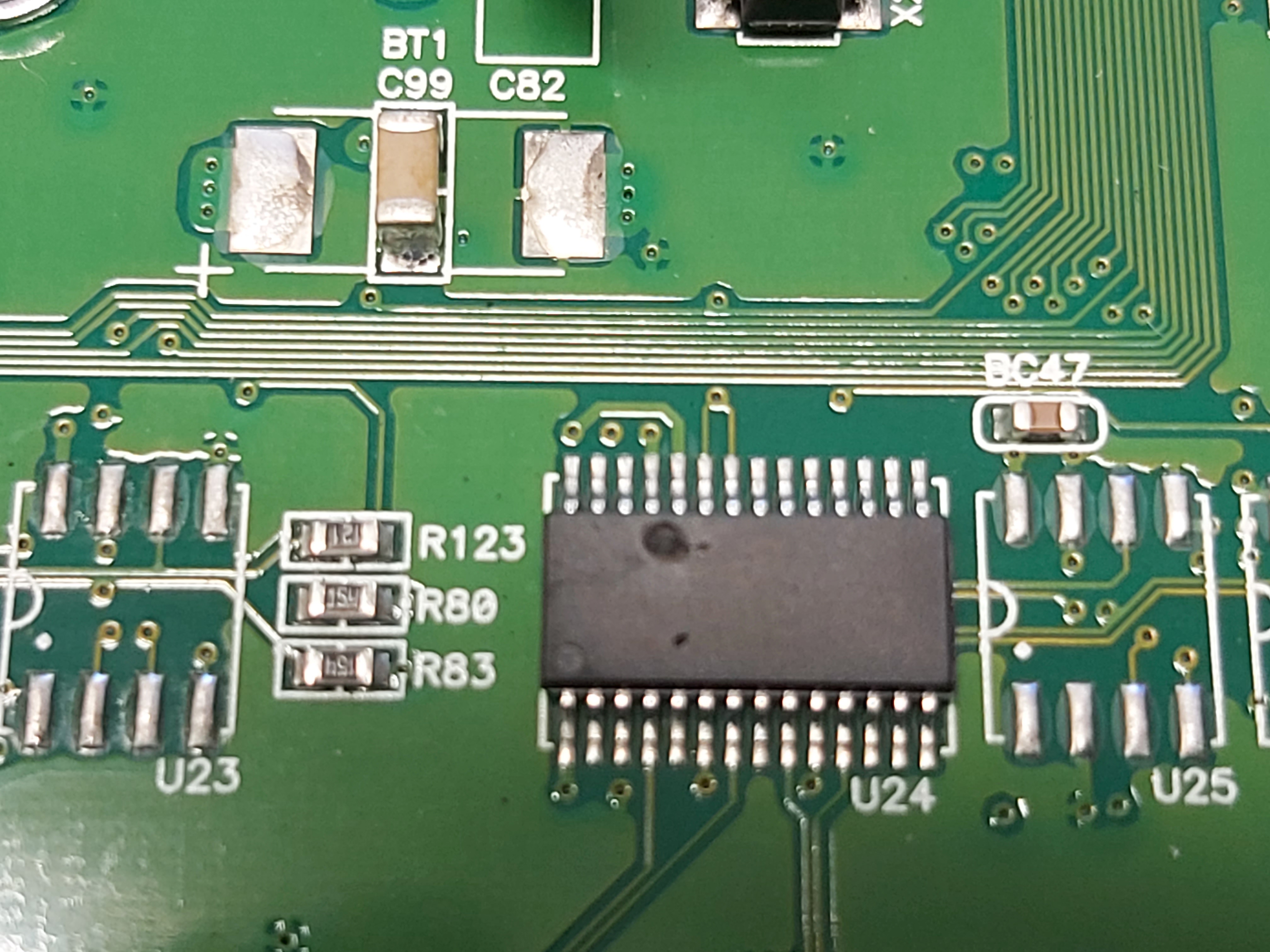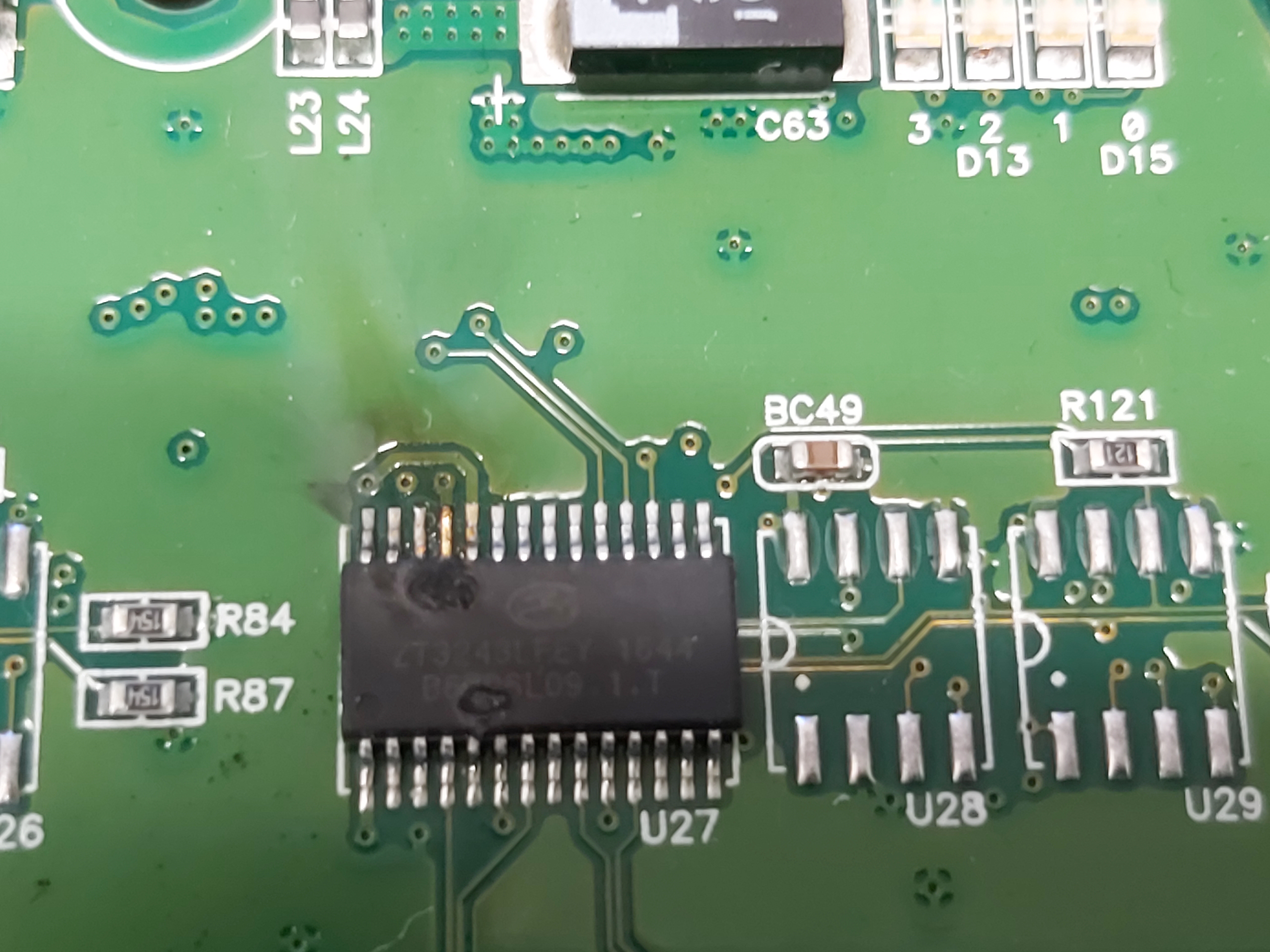What happens when your RS-232 serial ports do not have enough surge protection in them and surge hits?
Here are some examples what can happen:
The failed chip on those examples is ZT3243LFEY from ASIX Electronics Corporation. ASIX Electronics’s ZT3243LFEY is triple transmitter quint receiver rs-232 28-pin tssop in the interface, bus line transceivers category. Those damaged chips were found on Moxa NPort 5410 serial port server devices.
ZT3243LFEY Triple Transmitter Quint Receiver RS-232 28-Pin TSSOP chip data links:
https://www.datasheets360.com/part/detail/zt3243lfey/3533212789773430873/
https://www.datasheets.com/en/part-details/zt3243lfey-asix-electronics-47159858
ZT3243LFEY chip promises ESD Protection for RS-232 I/O’s, but clearly in demanding applications there should be also other protection also in demanding environment. RS-232C serial port lines are quite prone to be damaged by overvoltages. The damaged to computer serial ports have become more and more expensive to replace because of higher intergaration: usually you have to buy new motherboard if one serial port in it gets broken. So it is wise to use some extra protection in situations where overvoltages surges are quite propable and repairing gets expensive.
Protecting RS-232 serial port against overvoltages usually quite easy. The standard says that the signal can be voltage between +25 and -25 volts, so anything outside this range is not allowed. Typical RS-232C receiver chips can handle well voltages up to +/-30V. So an overvoltage protection which cuts out everything above 25V and acts fast is the solution. Suitable components for this are varistors (VDR), zener diodes and other fast semiconductor based overvoltage protection devices. Varistors offer a large voltage surge-handling capability, but a delayed response time. Zener Diodes have a better response time over MOVs, but can only handle a small amount of current.
In bad overvoltage situations is is recommended to use galvanic isolators in serial port lines or use serial data converters which provide isolation and protection (short haul modems, current loop adapaters etc.).
Links to RS-232 surge protection information:
https://www.epanorama.net/circuits/rs232_protector.html
https://knowledge.ni.com/KnowledgeArticleDetails?id=kA00Z0000019MvVSAU
https://www.commfront.com/collections/rs232-rs485-rs422-ethernet-surge-protectors
https://www.blackbox.fi/en-fi/fi/1578/11760/RS232-Protector
https://www.polyphaser.com/rs-232-surge-protector-lightning-arrestor-series



1 Comment
Indolmoseent says:
Thanks for sharing this info about the ZT3243LFEY chip and its ESD protection for Traffic Jam 3D. While it’s definitely a step in the right direction, I agree that additional protection is crucial in demanding applications and harsh environments.